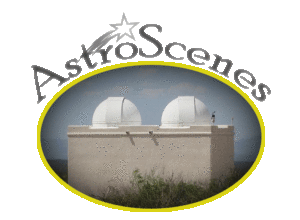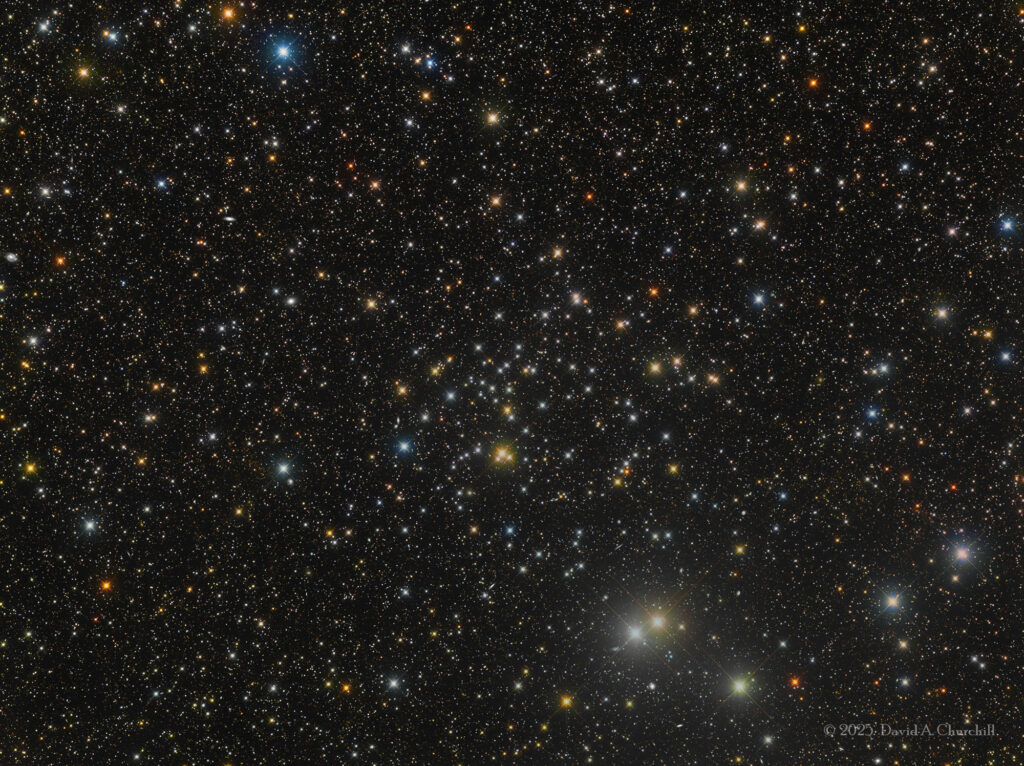NGC 752 (Caldwell 28)
Open Cluster, Andromeda
October 2025. Cave Creek Canyon Observatory, Arizona Sky Village
- Description
- Technical
- Links
NGC 752 (also known as Caldwell 28) is an open cluster in the constellation Andromeda. The cluster was discovered by Caroline Herschel in 1783 and cataloged by her brother William Herschel in 1786, although an object that may have been NGC 752 was described by Giovanni Batista Hodierna before 1654. The large cluster lies 1,400 light-years away from the Earth and is easily seen through binoculars, although it may approach naked eye visibility under good observing conditions. A telescope reveals about 60 stars no brighter than 9th magnitude within NGC 752.
The most up-to-date research lists 302 stars as members of NGC 752. Since the age of the cluster is 1.34±0.06 Gyr, they are mainly low mass stars on the main sequence or red giants, with a main sequence turnoff at about F0. A blue straggler star is also present, along with some spectroscopic binaries and variable stars. The detached eclipsing binary DS Andromedae is a member of this cluster.
The most up-to-date research lists 302 stars as members of NGC 752. Since the age of the cluster is 1.34±0.06 Gyr, they are mainly low mass stars on the main sequence or red giants, with a main sequence turnoff at about F0. A blue straggler star is also present, along with some spectroscopic binaries and variable stars. The detached eclipsing binary DS Andromedae is a member of this cluster.
Telescope: Planewave Delta Rho 350 f3.0
Mount: Astro Physics 3600GTO “El Capitan”
Camera: ZWO ASI461MM pro / EFW-7
Guider: ZWO OAG-L-68 / ZWO ASI174mm Mini
Filters: Astrodon II 50mm Sq LRGB
L: 99×5 mins = 445 mins, R: 36×5 mins = 180 mins, G: 36×5 mins = 180 mins, B: 36×5 mins = 180 mins
Total Imaging Time: 16h 25m
Data Imaged remotely on 4 nights during October, 2025.
Data acquisition & Processing by David Churchill.
None


